The meaning of Rangiroa is ‘vast sky’ in the island’s dialect, and it is a very apt name: both above and below the surface, you are surrounded by illimitable space. Rangi is one of the world’s largest atoll islands. The huge lagoon has its own horizon and looks quite like a sea in itself — especially on the day we first arrived where waves were crashing on the shore both lagoon side and ocean side. It is so large that apparently, interior storms can sometimes occur.
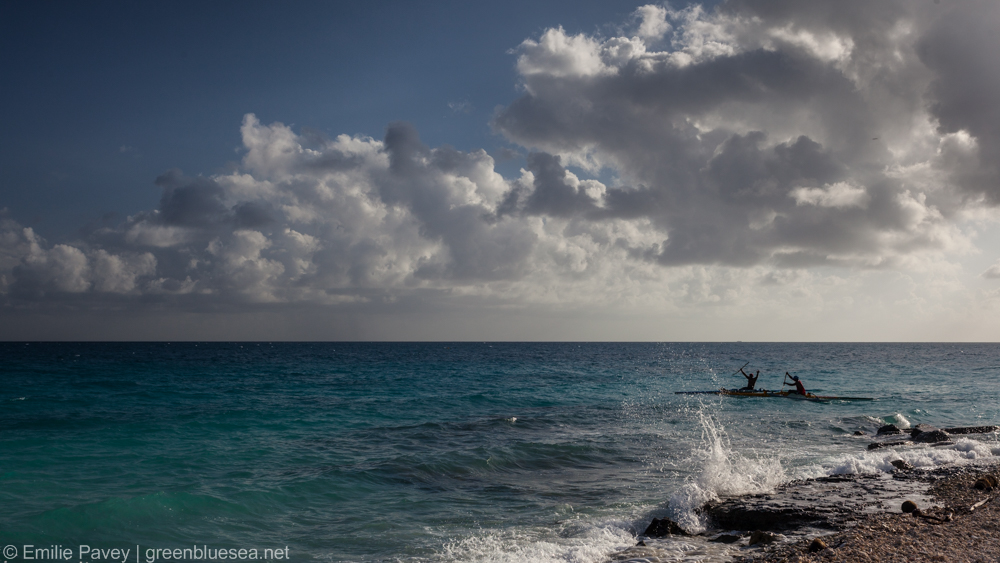
Rangi was the first destination of our February 2016 trip. At the northern end of the atoll are has two famous passes for scuba diving, (more about those below) and in between them is a small strip of land which accommodates the majority of the atoll’s population — some 2000 people — in two main villages, Avatoru and Tiputa. In comparison to Fakarava, Rangi has more shops and services, but it still remains a small, slow-paced island. In addition to a modest tourist infrastructure — a few dive shops, restaurants, guest houses and hotels — the atoll features pearl farms and a vineyard. This is French Polynesia after all.
The dive shop: Raie Manta Club
Raie Manta Club was the first dive shop to be established in the Tuamotus archipelago, in 1985 by local legend Yves Lefèvre, a professional underwater photographer and videographer. Yves has published several marine life guides and photo books and has produced images for the BBC, National Geographic and Arte to name the big ones. Despite these awe-inspiring credentials he continues to work day in day out as a dive guide at his centre in Rangi with unabated enthusiasm for the underwater world. It was both a privilege and a pleasure to dive with him and his partner Livia in their backyard. And located right on Tiputa pass, what a backyard they have.
But before I write about the dives: a disclaimer, and an acknowledgement! I had some camera issues during the first few days in Rangi. A minor leak incident (later fixed) meant I didn’t bring my camera on some dives, and overall, my photo results weren’t as successful as in Fakarava, by which time I had made significant improvements by trial and error! Therefore my dive buddy and skilled photographer Eian Kee has kindly allowed me to supplement his post with a few of his own excellent shots, and I’m very grateful to him.
Passe de Tiputa: incoming tide
The most iconic and memorable dives of the trip were those that we did in the Tiputa Pass on an incoming current. (Read about passes and why we dived these places here.) This dive was at the heart of why we came: our main objective was to see the great hammerhead shark, which prowls Tiputa Pass from December to February. And see it we certainly did. We spotted the beast on eight out of nine dives in the pass, and sometimes we saw several sharks at a time: an excellent success rate!
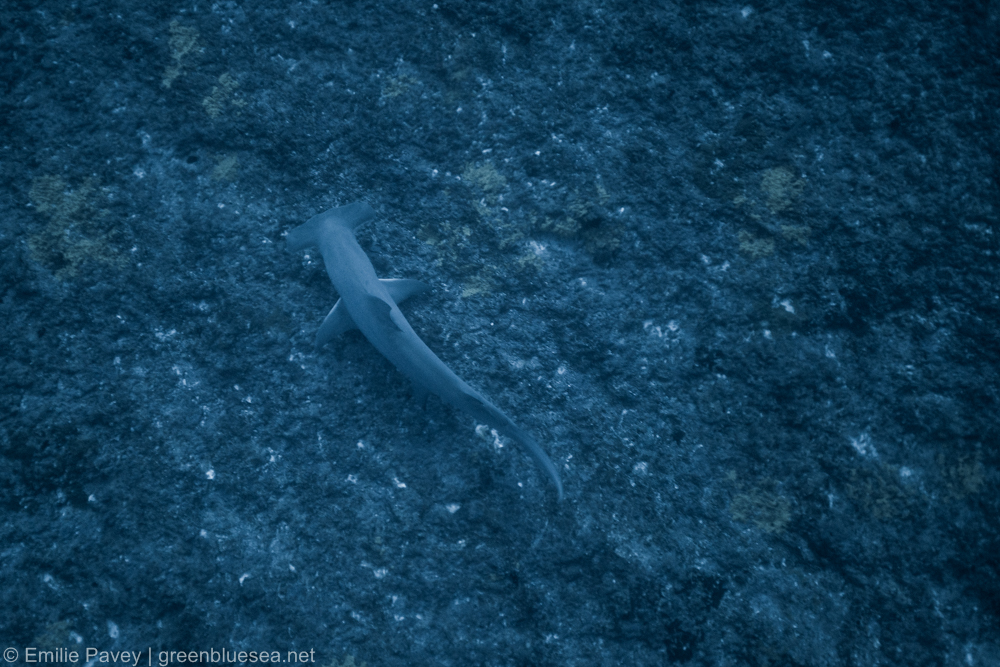
The dive begins deep. We would descend and survey the sea floor, looking for the shark. When Livia or Yves spotted it, they would wave frantically (but quietly!) and we would all attempt to get a little closer — but always hovering overhead, or this shy monster would dissolve into the gloom.
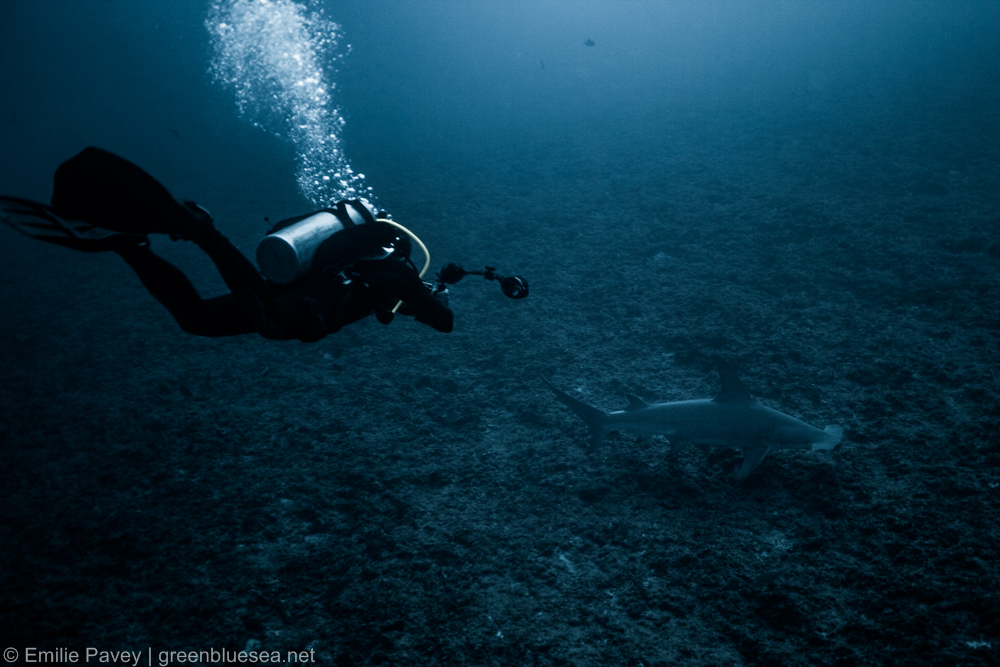
The photo below is the one Eian was taking in the shot above.
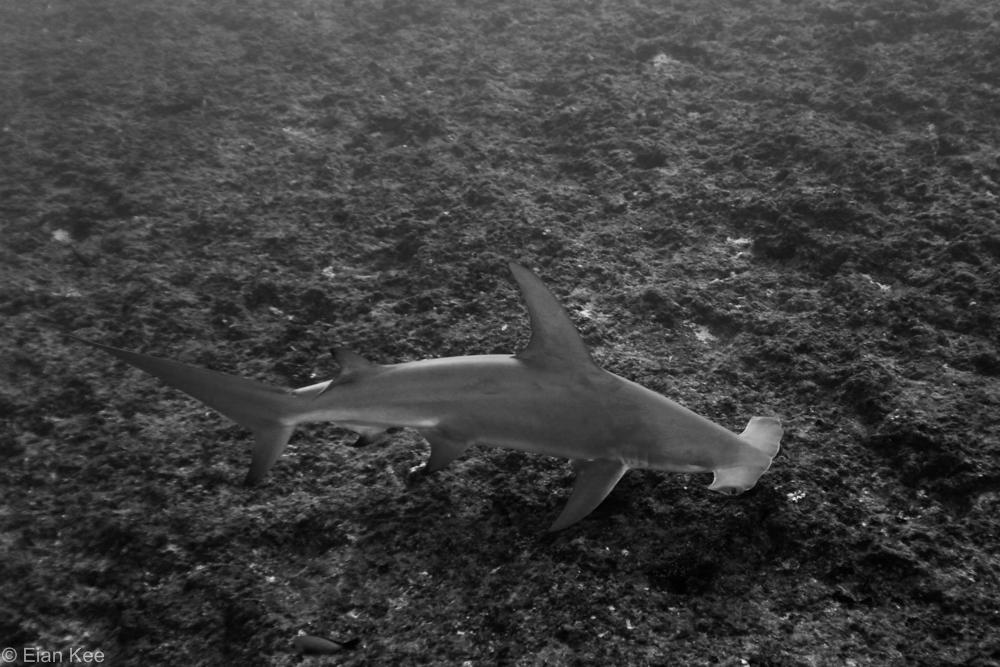
On a few lucky occasions, we saw another magical sight: a school of eagle rays flying gracefully in formation (or so my human mind imagines it). The eagle rays are in fact part of the great hammerhead’s diet, and their presence is tied to the shark’s.
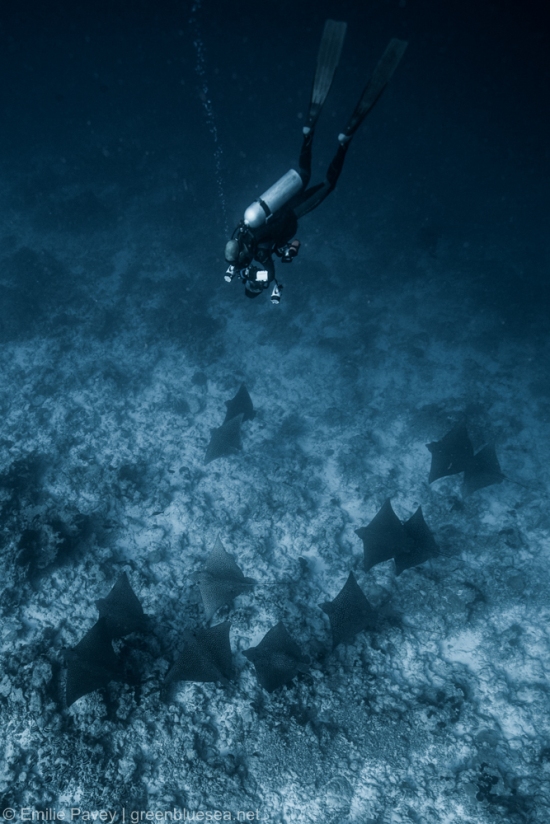
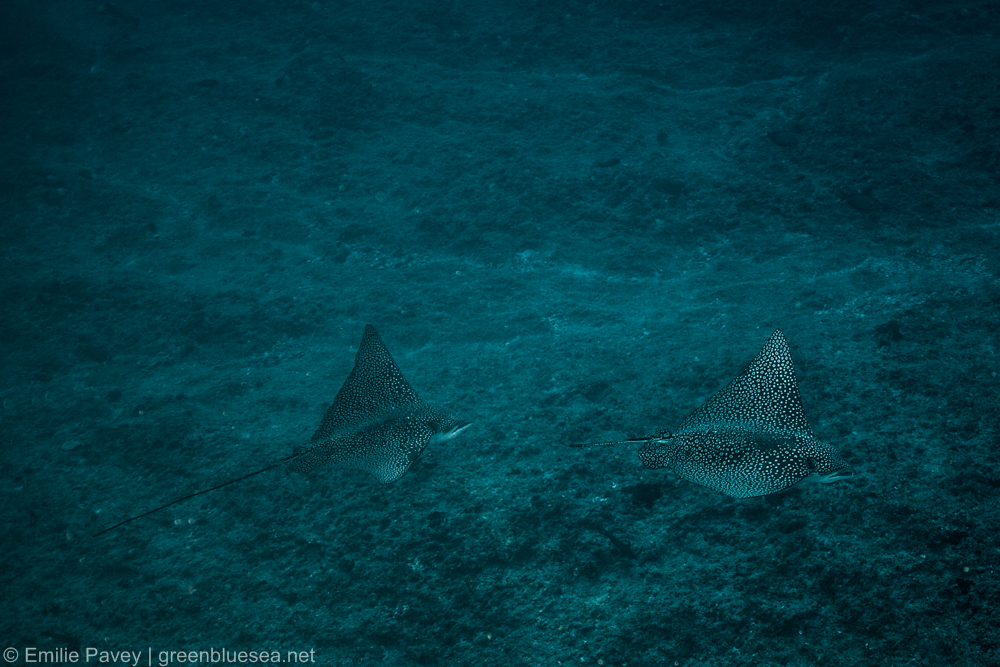
(All of these photos are taken in deep, gloomy conditions, hence the dim lighting and colours.)
After an exciting few minutes at depth, we would soon head to shallower waters and start a speedy drift into the lagoon. On one of those drifts, which coincidentally was also my 300th dive, we made a most serendipitous encounter:

To give you an idea of how fortunate this was: Yves, who has dived this site every day for 30 years, can count the number of times he has seen a whale shark here on the fingers of one hand!
The drift ends end the dive at the motu, a coral islet just inside the lagoon, which offers shelter from the strong current. The spot is nicknamed ‘the aquarium’, for obvious reasons. It is home to all the usual coral-dwelling suspects, including some hefty moray eels. I loved the resident school of paddletail snapper that shelter in the shade of the dive boat and seem completely unflustered by divers.

Another feature of this spot (for fish nerds) is that it is home to an endemic species of butterflyfish: the tahiti butterflyfish, which is only found in French Polynesia (my fish book concurs). It is the brown and white pair in the picture below. (The others are surgeonfish, a goatfish and an angelfish.)

Tiputa on an outgoing current
When the tide is going out, it’s obviously not a good idea to dive in the pass: the dive profile would be all wrong and you would end up getting flushed out into the Pacific! Therefore in these conditions we dived the reef slope just outside the pass.
We would either jump in on the drop-off, or first spend fifteen minutes in the blue, where little grey sharks would zoom up out of the depths to take a look at us. We saw a silky shark and some silvertips here too.
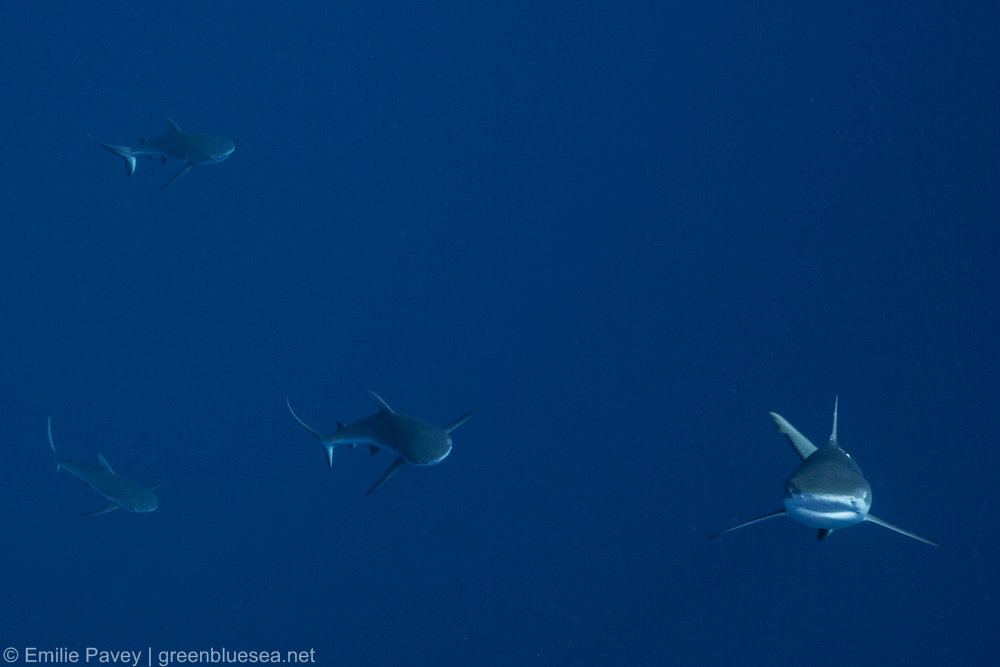
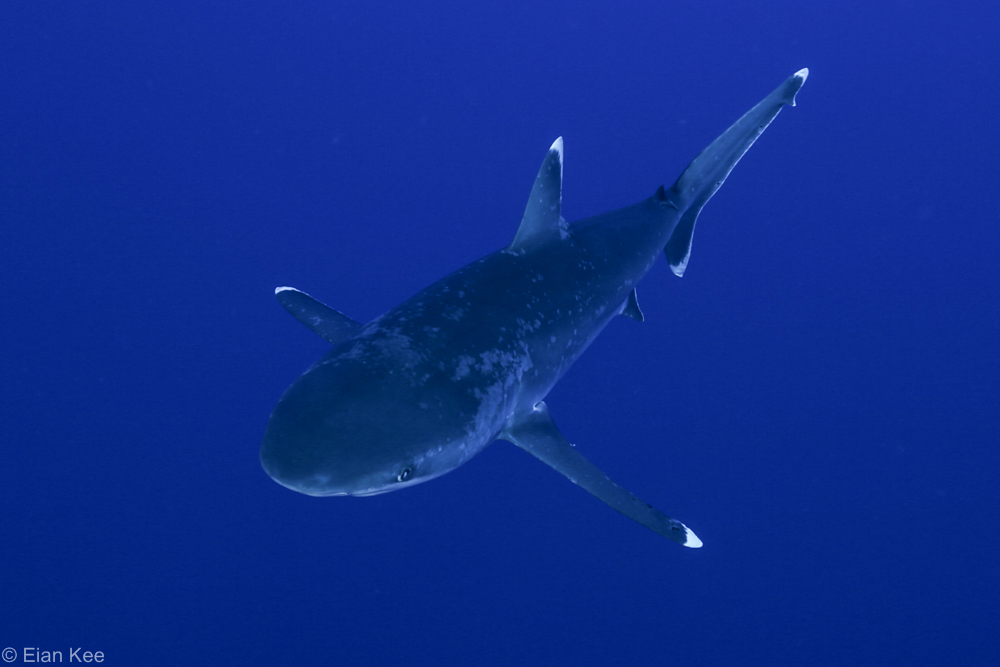
On the reef itself, anything and everything can appear: small and large barracuda, passing mantas and eagle rays, and a lot of fairly fearless reef fish. Huge shoals of paddletail snapper were massing on the reef slopes, and clouds of utterly approachable bannerfish were a real treat for the photographers in the group.
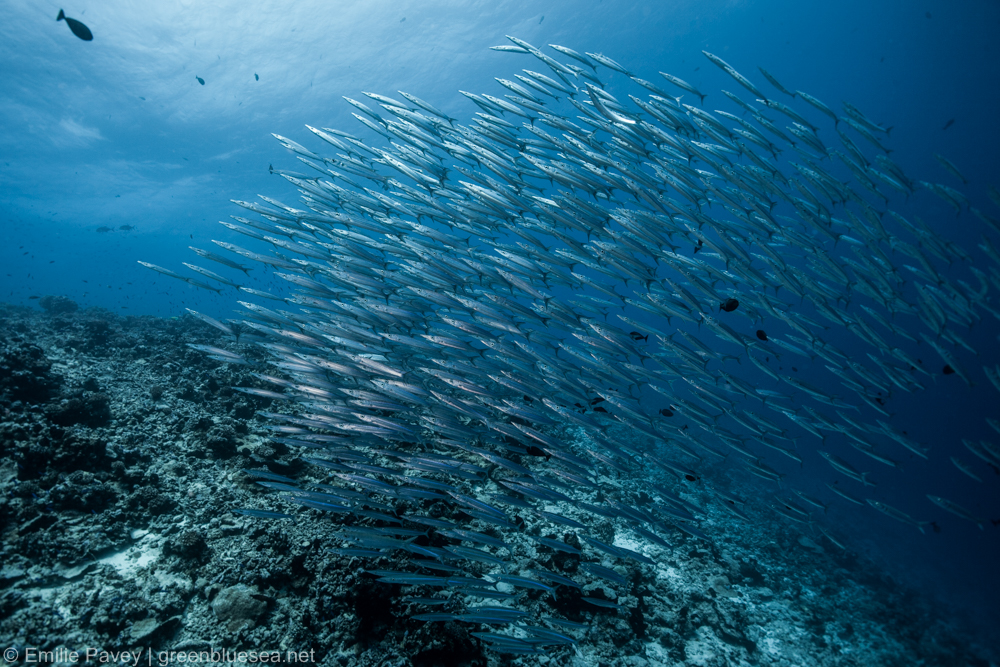
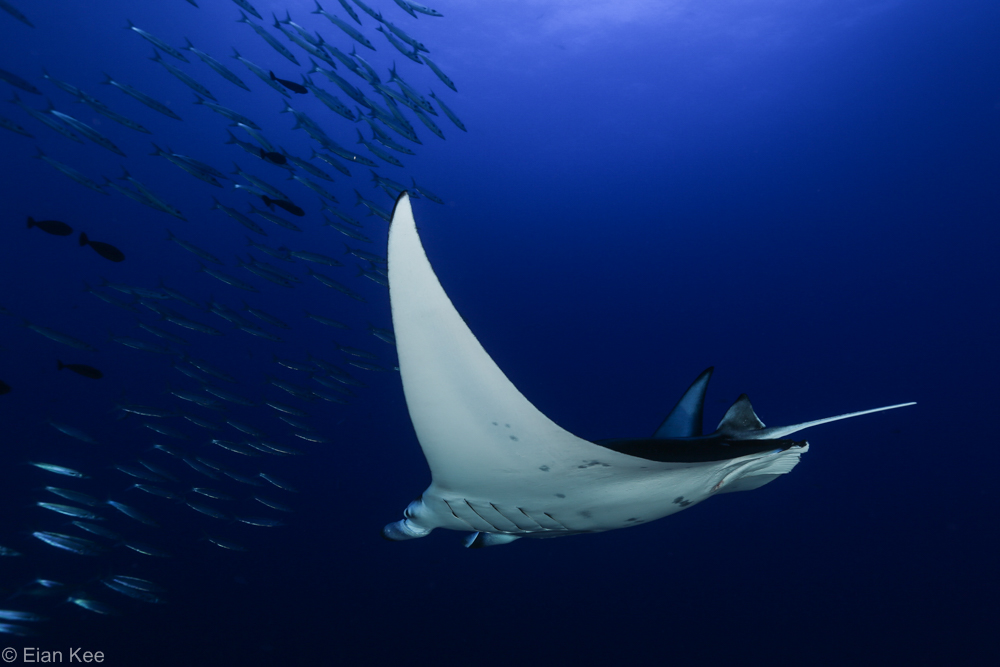
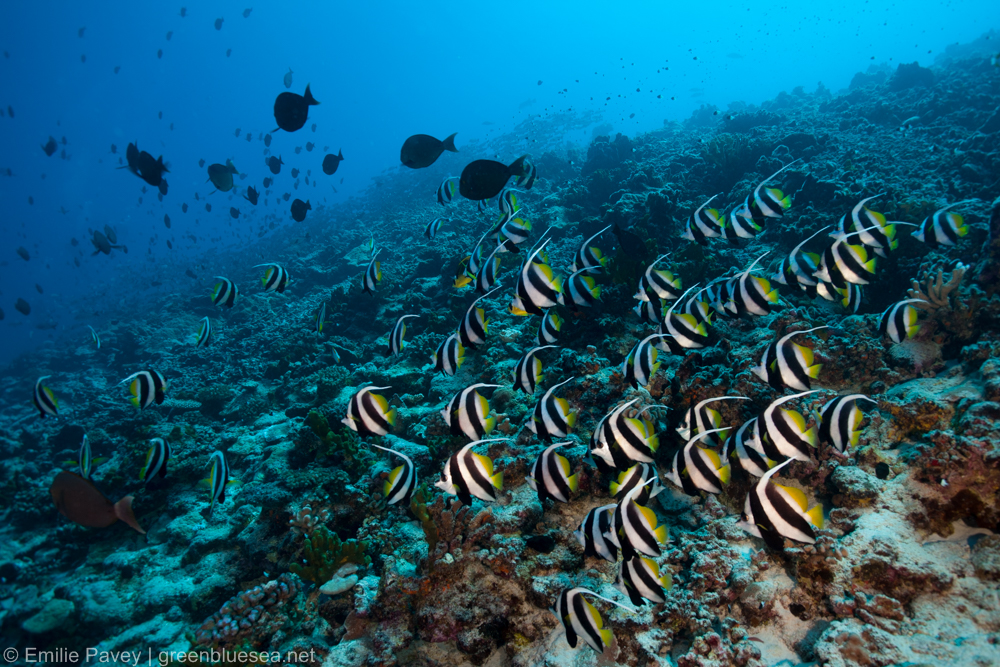
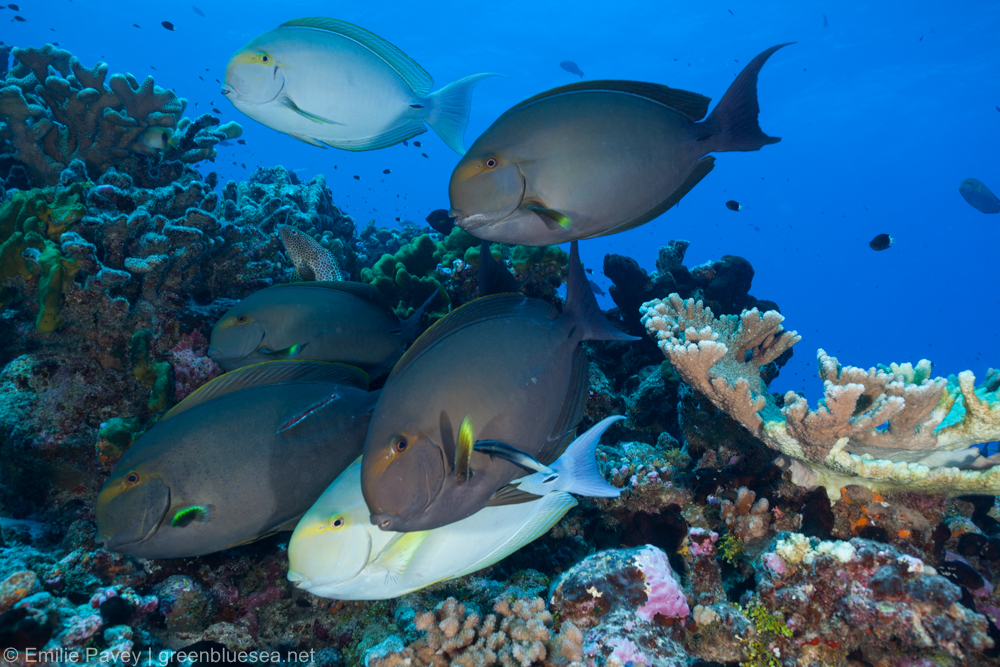
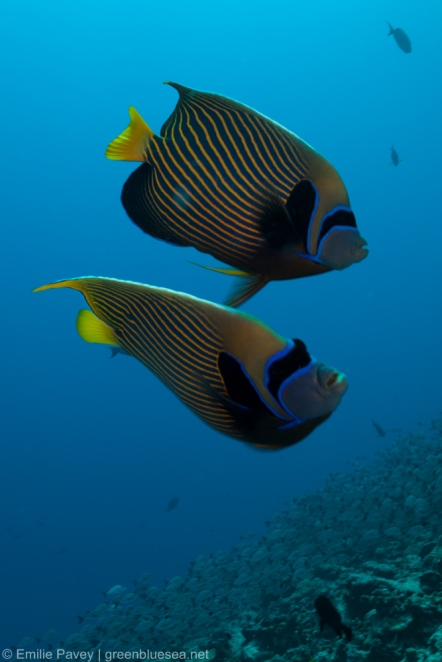
The dive would end just inside the pass: the outgoing current is so strong that it creates a narrow counter-current hugging the shore that you can ride back in at the end of the dive (taking care to stay tight against the reef so as not to get sucked into any whirlpools, very visible from the surface!). The waves were usually pretty powerful at this point. I don’t think this turtle meant to come into contact with me but the swell sort of wooshed us together.
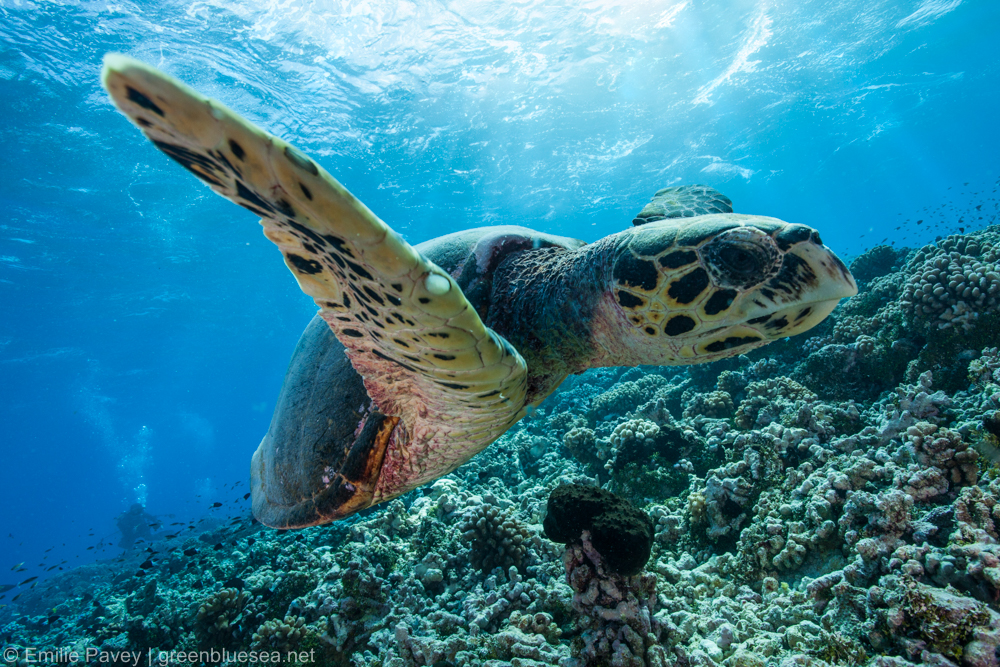
Sometimes, Livia and Yves would run a sunset dive on the reef. The highlight of this was to watch the spawning of the surgeonfish at dusk. This happens for only a few days per month during a specific moon phase and we were lucky enough to be able to catch it. Thousands of convict and whitespotted surgeonfish (see the pictures below for the two types) would start massing and whizzing about on the reeftop as night fell. Suddently, amid this frenzy of activity, small groups of fish (a female chased by several males each time) would zoom up and release bursts of spawn into the open water. At the same time, predators such as jacks and trevally would take advantage of this commotion to snag some prey. The sheer numbers of fish made this quite a spectacle and by the end of the dive, there would be such a fog of spawn in the water that it became hard to see the other divers — incredible, or perhaps slightly revolting, depending on your standpoint!
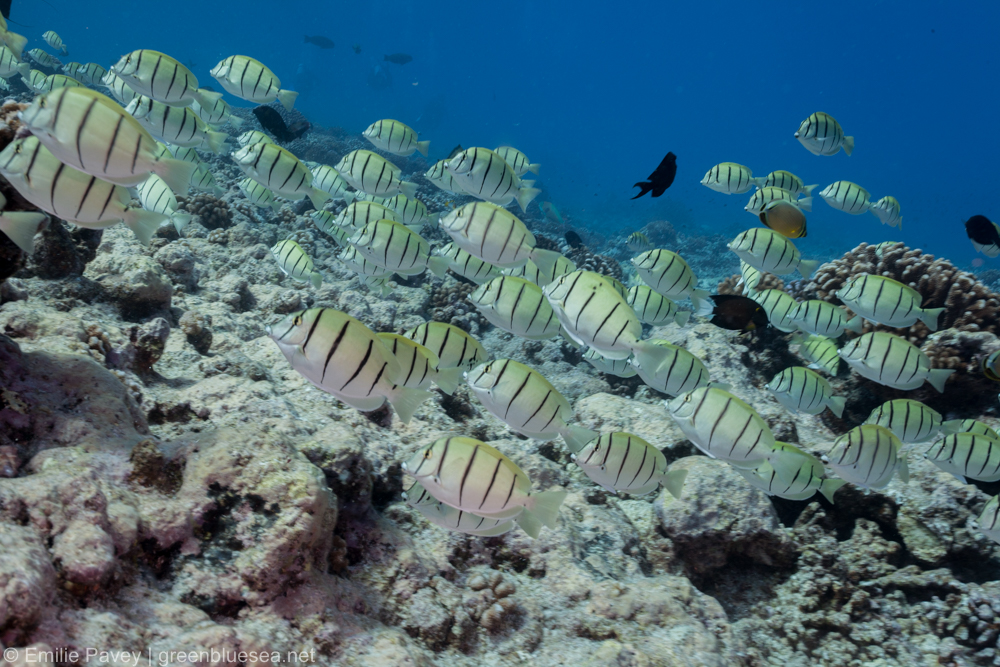
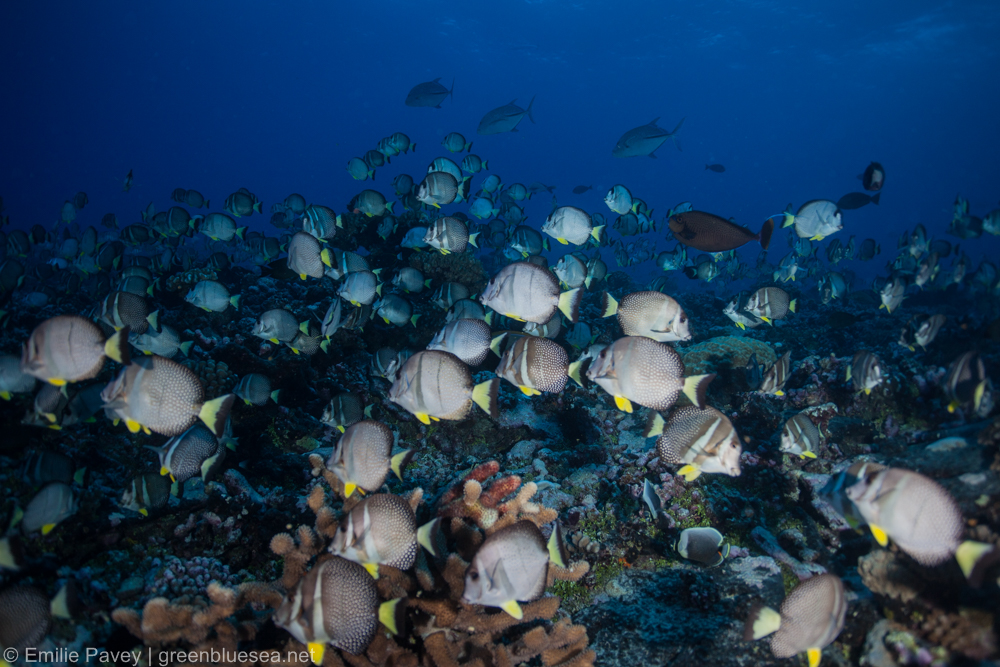
On all of the dives at Tiputa, both in the pass and on reef, we were frequently visited by a pod of bottlenose dolphins whose brief but playful appearances melted our hearts. I needn’t describe them — just look at the pictures:
Avatoru Pass
This is the other famous dive site of Rangiroa. The highlight here was the silvertip sharks. Our dive took us to a particular spot where our guides hid just a little bait inside the coral to attract them. On the first of these dives, I didn’t have my camera. I didn’t really mind as it was incredibly exciting to watch these hefty sharks so close to me. They were coming right over my head!
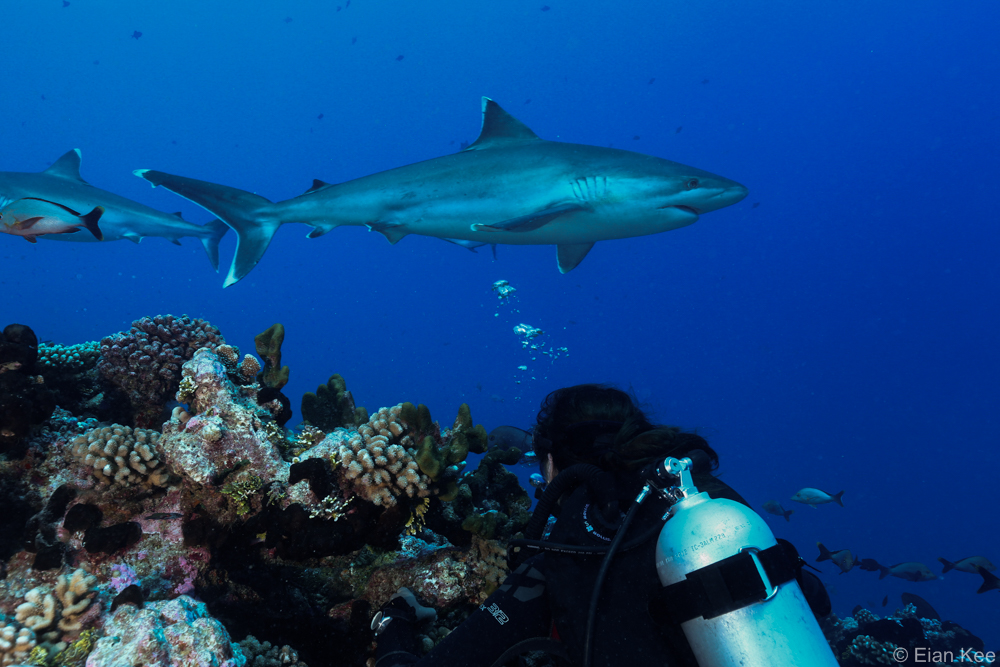
On our second dive here, I had my camera ready and positioned myself at a good spot to shoot the action, but the silvertips didn’t come so close and the bait got devoured by hungry snapper and some grey sharks instead. I would have liked to snap the silvertips, but it is important at times like these to put things into perspective: the sight before my eyes was still a marvellous one.

Finally…
I must mention the lovely family guesthouse we stayed at, Pension Tapuheitini, where our host Marguerite and her husband and daughter made us feel most at home. With our packed three dives per day schedule, we did little more than eat and sleep there, but I can assure you that both of these activities were of excellent quality!
I had so many firsts in Rangiroa — the dolphins, the whale shark, the silvertips, the incredible surgeonfish display and of course the great hammerhead — that these dives, camera woes or no, were the best dives of my life bar none. Returning to Rangiroa in the years to come is not a question for me, it is a certainty.
If you enjoyed this post, please do follow this site by ‘liking’ its facebook page to receive future updates, or subscribe by email (scroll down, bottom right). Thank you!












3 comments ›